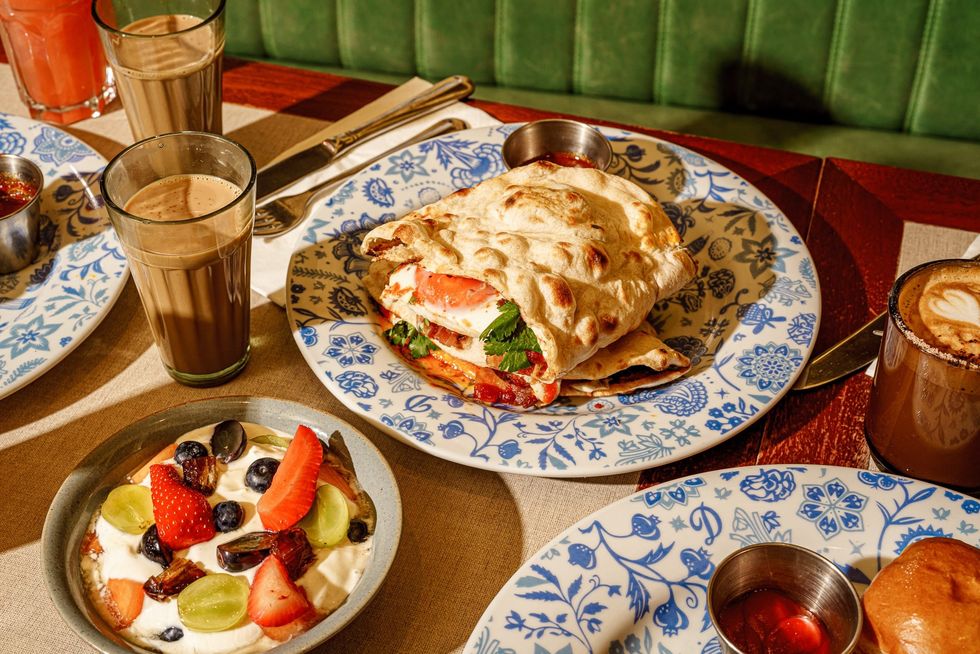By Raageshwari Loomba Swaroop.
Michael Jackson: I would only hear music on radio and cassette players. Eyes closed, grooving and moving to the tracks. The Grammys was on and my neighbours had just got their TV set. I squeezed past 15 children and peeped under their arms to watch the genius
in action. Michael performing Billie Jean! His dance, persona, pitch and connect with
the audience! An artist who sang and danced, but used his voice for greater issues. I
grasped it like a sponge. I was besotted, enthralled and in love, and will always be.
ABBA: There was something about their sound. It was bright, happy and celebratory;
friends singing together, upbeat melodies and fabulous words. Their arrangement and
programming was so ahead of its time. Artists are still using their tracks even today,
and the success of Mamma Mia is testimony enough.
Sound of Music: This path-breaking movie was the background to my childhood. I
learnt how to sing choir music, started to love harmonies, and despite being a child
fell in love with the children. I even dressed like Maria and cut my hair really short. I
wanted to be a nun like Maria. It deeply shaped my character to love teachers, music,
the church, and most importantly the dedication and purity needed for music.
Don Williams: My love for country music was awakened by not some glitzy and cool
singer, but by the elderly and charming velvet voice of Don Williams. I nose-dived into
his songs and just couldn’t get enough. If you are in love or are heartbroken, good
luck with holding your tears. Lilting melodies on the soothing guitar, I would hear his
stunning songs endlessly as I drove the streets of Mumbai.
Allah Tero Naam, Ishwar Tero Naam: My father introduced me to this heart-wrenching
song from the movie Hum Dono at a very young age. He wanted me to know the depth of the Lord and how he manifests in different names and religion. Today our world lacks acceptance and tolerance because we have failed to familiarise ourselves with diverse communities. The more that we know, the more that we will understand. I feel perhaps only music second to love can heal wounds and build ties. The song sung by Lata Mangeshkar has breathtaking music by Jaidev ji and deep lyrics by Sahir Ludhianvi.
Celine Dion: She is the voice! But more than her voice, I loved Celine for her
warmth towards her fans, love for her husband, wisdom to balance intense success,
and sense of humour. To reach such great heights and yet not take it for granted is remarkable. The respect she has for everyone is truly inspirational. When I watched her
perform live, I was mesmerised and so happy to see that what I know of her is exactly
the way she is.
Tina Turner: I only got to know of Tina just like the rest of the world when she was 42
and released What’s Love Got To Do With It. I did not know her remarkable story of
struggle and strife. She is a legend but to make a debut in popular music at 42 was
inspirational, especially when today record labels foolishly think we have to be ‘young’
to sell records. Music is for the ears, not the eyes. If you try to woo the eyes, it will never
sustain. Her unbelievable story makes her so loved, respected and followed.
Nazia Hassan: I just loved her songs as a teen. Growing up, there was such love and
fun times with Pakistan. Yes, we had great competitiveness in cricket but immense
love for their music and stage shows. Today, I hear such juvenile stories of division. I
loved Nazia for her unique voice, refreshing singing style and fun songs. I followed her
with great interest and was heartbroken to hear the news of her cancer. I also was
deeply inspired by how humble and loving she was despite her meteoric rise to fame.
Whitney Houston: Her songs and life are a school for any student of music. With dedication and faith, she touched pinnacles of success. She showed how fame can create
miracles, and at the same time mental chaos if your support system isn’t balanced.
How she spiralled from a pitch-perfect singer to someone who could not hold a
note stunned me with despair. It taught me so much. Her songs teach us perfection, her
rendition gives us all goosebumps and her life teaches us how life is fragile and fame is fickle.
Trilok Loomba: My music exists because of my Guru, my beloved father Trilok Loomba.
He won the National Award in 1972 and still struggled immensely to get recognition. His
breakthrough was just like mine, our song Duniya which debuted at number one. Dad
is the most positive and forgiving man, and that’s why he looks so young and happy. I
love his passion for his art and mantra: “It matters not who is listening or which label
is paying, your job is to rehearse, rejoice and keep playing music.” His lyrics are always
meaningful and I’m so lucky that I get to sing a few of his songs.
- Raageshwari Loomba Swaroop is an actor, singer, motivational speaker and wellness entrepreneur.


















 Every Dishoom location draws inspiration from a specific narrative rooted in Bombay’s cultureHaarala Hamilton
Every Dishoom location draws inspiration from a specific narrative rooted in Bombay’s cultureHaarala Hamilton
 South Asian Heritage Month is observed annually from 18 July to 17 AugustGirlguiding
South Asian Heritage Month is observed annually from 18 July to 17 AugustGirlguiding